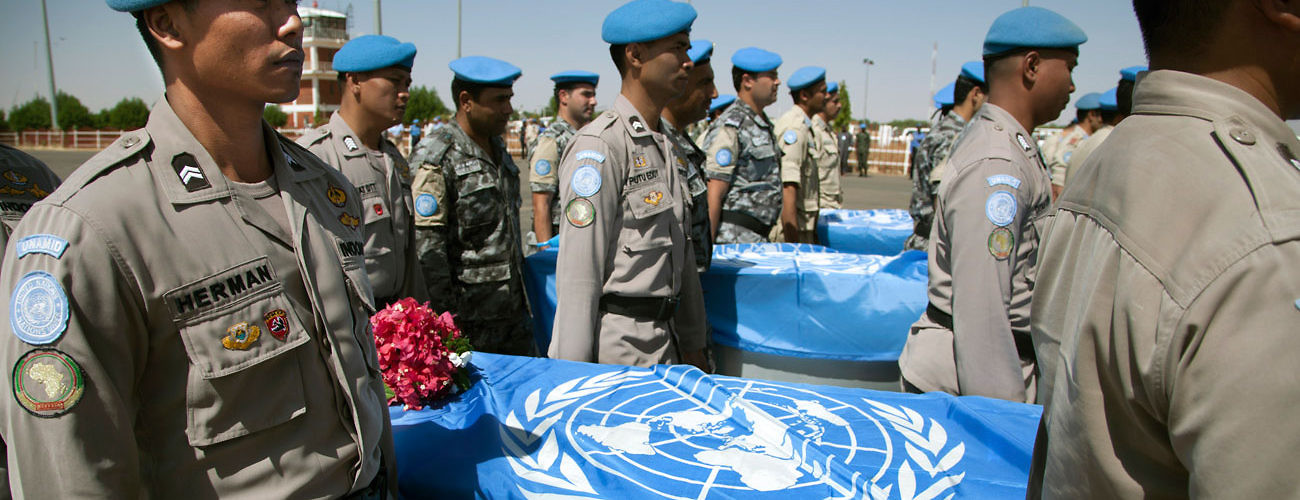Peacekeepers from the AU-UN Hybrid Operation in Darfur (UNAMID) carry the coffins of their fallen colleagues, to be repatriated to Senegal, El Fasher, Darfur, October 13, 2013. UN Photo/Albert González Farran
How deadly is UN peacekeeping? Have UN peacekeeping fatalities increased over the past decades? Those who have attempted to answer these questions differ drastically in their assessments, in part due to the dearth of data and the variety of calculation methods employed.
In order to fix some of these shortcomings and take a fresh look at these questions, this report analyzes trends in UN peacekeeping fatalities using a new dataset compiled by the UN Department of Peacekeeping Operations. As a result of the new data employed and methodological innovations, this report constitutes the most detailed study of UN fatality trends thus far.
The analysis reveals that overall UN fatalities are not substantively on the rise. Indeed, total fatality ratios are declining. Nevertheless, this decline does not equally apply to all types of UN fatalities; there is strong evidence that UN fatalities due to illness are on the rise. While these findings are important, further research is needed to adequately examine whether UN peacekeeping missions have become more dangerous in recent years.








